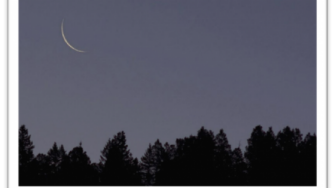
Eid-ul-Fitr is the largest religious festival for Muslims. The celebration takes place on the first day of the month of Sawwal, right after the month of Ramadan has ended. This is a day of great joy for Muslims across the world. The day begins with a special prayer and then people gather to visit one another. The main purpose of this festival is to spread happiness, see past our differences and come together. In Bangladesh, where I come from, everyone is given a four-to-five-day holiday for the festivities.
Celebrating Eid in Bangladesh also involves observing a few traditions:
New clothes: One of best tradition of Eid is to buy new clothes for everyone. Everyone either gifts or donates new clothes to make sure that we are all wearing something new for the day.
Going home: In Bangladesh, people usually work in big cities and away from home for most of the year. So, going home for Eid celebration with lots of gifts is a feeling which I cannot express in writing.
Eid gifts and cards: Younger people buy small gifts for their families, friends or loved ones along with a card expressing good wishes.
Finding the new moon and Chad Raat: On the last day of Ramadan, after breaking fast and evening prayer, families gather under the night sky and try to find spot the crescent moon which is so thin and tiny that it’s nearly impossible to see. But I can remember the joy that comes with finding it and cheering about the beginning of Eid. On that night girls decorate their hands with mehndi (henna). Children love the colours!
Eid day: At morning people bathe, wear new clothes, and go to Eidgah - an open field for prayer. After prayer people hug each other and say Eid Mubarak (best wishes for Eid). During praying, hugging, and greeting one another, people forget who is rich and who is poor. All pray together, which symbolises the main purpose of Eid; to look past one another’s differences and come together in solidarity. Then people start visiting relatives, friends, and neighbours. Children go to fairs and roam around all day without any objection from their elders.
Eidi: One of the traditions of our culture is when every elder must give new notes of money (eidi) to young people when they salaam (greet) them. I have fond memories of my cousins and I calculating how much money we gathered from Eidi which became something of a competition among us children.
Food: Eid day starts with sweets. At morning, before going to prayer, people eat “Semai” which is a common sweet dish eaten with a roti (wrap). For lunch people have biriyani, beef, chicken, mutton, sweet yogurt, and much more. In the evening, people visit one another for dinner.
Common sweets on Eid day in Bangladesh
The Eid celebration lasts for two to three days and once the celebrations come to an end, people return to their professions and begin the long wait for next year’s Eid festival.
Umme Laila Urmi
PhD Candidate
School of Optometry and Vision Science
University of New South Wales
Sydney, Australia
